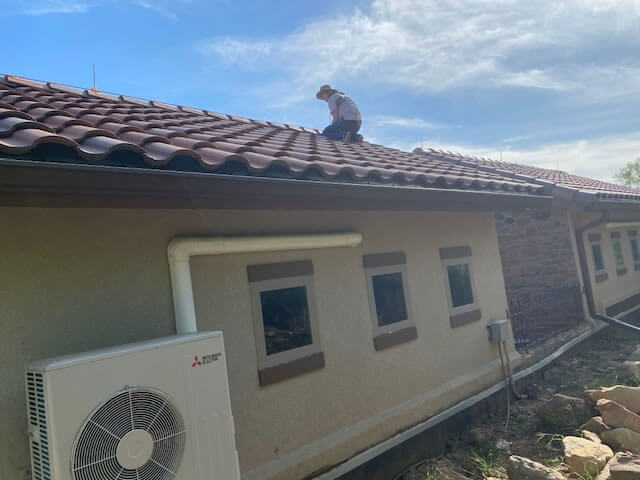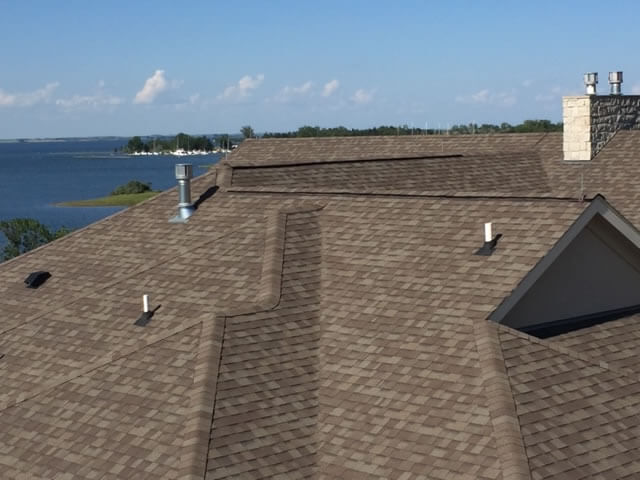Lightning Protection Systems – FAQs
Lightning protection systems are installed now than ever before. Lightning rods and cables can be installed so they are hidden and do not interfere with the aesthetics or architecture. Today’s lightning protection systems are almost inconspicuous. Contemporary buildings are equipped with sensitive electronic systems, therefore builders tend to include lightning protection systems not only to protect the structure but also to help protect the electronic systems and to keep the buildings safe.
UL Approved/Master Installer provide provide compliant systems by specifying, purchasing, and installing lightning protection systems certified by UL. Each design and system installation is fully compliant with the applicable standard(s).
The cost of lightning rod protection system is typically less than 2% of total cost of home and much less than cost of repairs or replacement damage due to lightning strike.
A lightning protection system may lower your insurance. When lightning strikes, it can be disastrous for the home, also for the insurance company.
Absolutely not. An experienced lightning protection designer and installer can customize the system so that it blends in with its surroundings. If a lightning protection is installed in the early stages of the building construction the down conductor for the system can even be concealed inside the walls.
Usually lightning rods are barely visible from ground. Lightning rods are 12 inches tall and 3/8” in diameter. When lightning protection system is designed during construction all of the lightning protection system, except the rooftop terminals, can be concealed and can be run inside the structure. Decorative finials can be used as air terminals, making the lightning protection an architectural accent.
Lightning rods do not attract lightning. Nor do they repel lightning. Lightning rods provide a resistance path to ground. If lightning strikes, the system attempts to carry the harmful electrical current away from the structure and safely to ground
Trees do not no provide protection from lightning. Instead they redirect lightning towards a home or structure causing structural damage as well as power surges in the structures wiring.
No. The electrical ground is not designed to handle the lightning strike. It is installed to protect the internal workings of the electrical system in your building.
No. No matter where you are located there is a risk of lightning strike.
The structural steel of a building does conduct lightning. You need a lightning protection system to intercept lightning to make sure that the lightning is able to pass harmlessly through the building.
These devices alone do not provide protection to a building structure. The only way they are effective is when they are a part of a complete lightning protection system.
A lightning protection system can prevent property damage from the effects of a lightning strike. It provides the electric charge produced by lightning a path of least resistance to the ground.
Lightning rods take the lightning charge safely to ground. Lightning rods supply the easiest path to ground safely.
Lightning Protection rods are very effective in keeping structures safe. Because of this they are installed at airports on many government buildings, including The White House, numerous commercial buildings and houses. The NFPA has maintained a Standard for lightning protection for over 100 years.
No, nothing can can prevent the lightning from striking. The purpose of a lightning protection system is to intercept the lightning strike and dissipate it safety into the ground. A lightning protection system doesn’t prevent a lightning strike; Lightning rods intercept a lightning strike and provide pathways to safely conduct the lightning to the ground.
Lightning protection can be installed at any time for existing structures and new construction. At Bolt Lightning Protection, our experts specialists can provide design, specification, consultation and installation services to develop a plan that best fits your project requirements.
Lightning protection is not a do-it-yourself project. Qualified specialists use UL-listed materials. This ensures the installation complies with nationally recognized Safety Standards of LPI, NFPA and UL. It is highly recommended you hire a professional installer to install the lightning protection rod who knows about compliance and safety standards. If it is not done properly it it will not provide lightning protection to your structure. Moreover, there are guidelines for connections, rod size, base thickness, cable configuration, etc.



